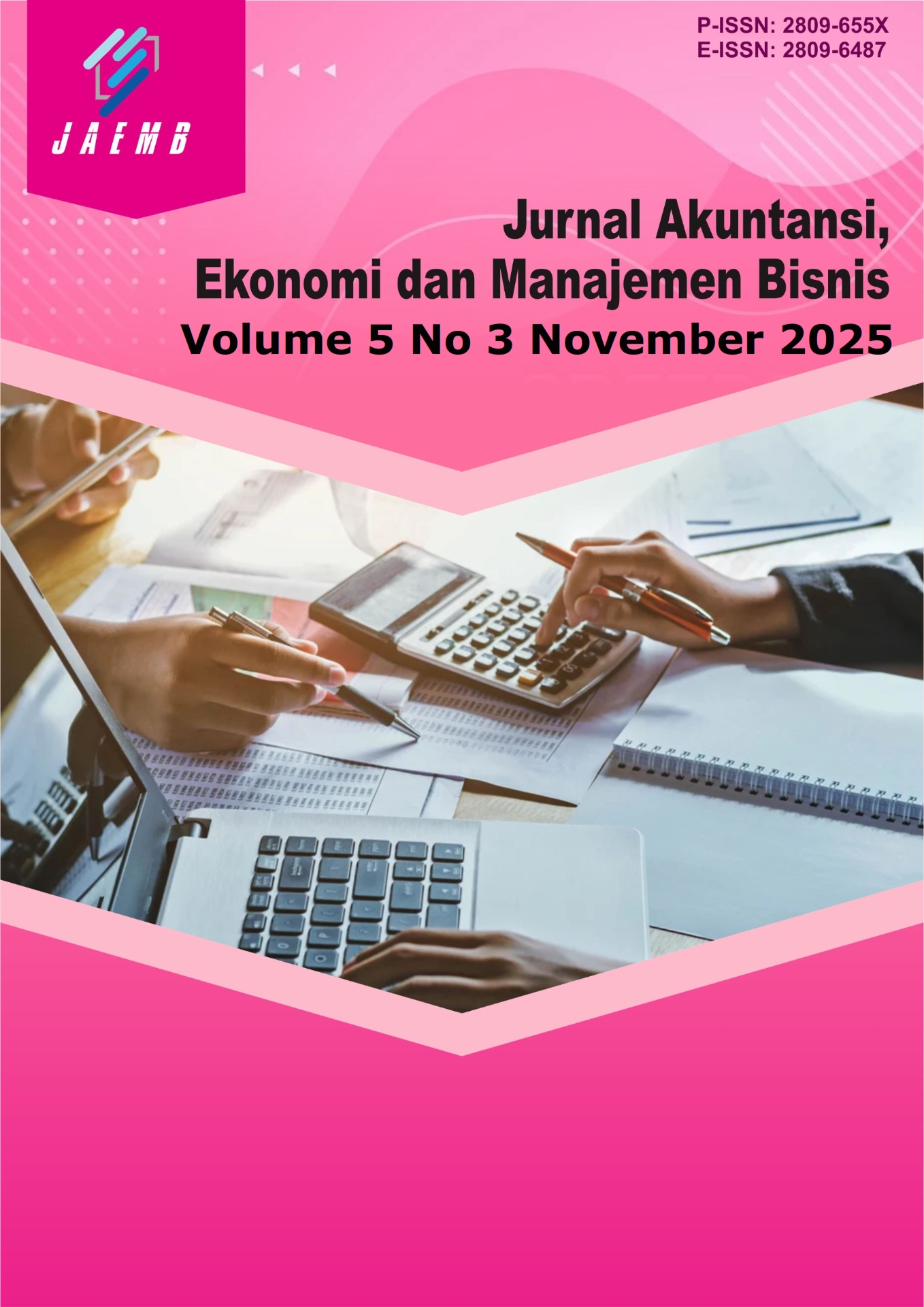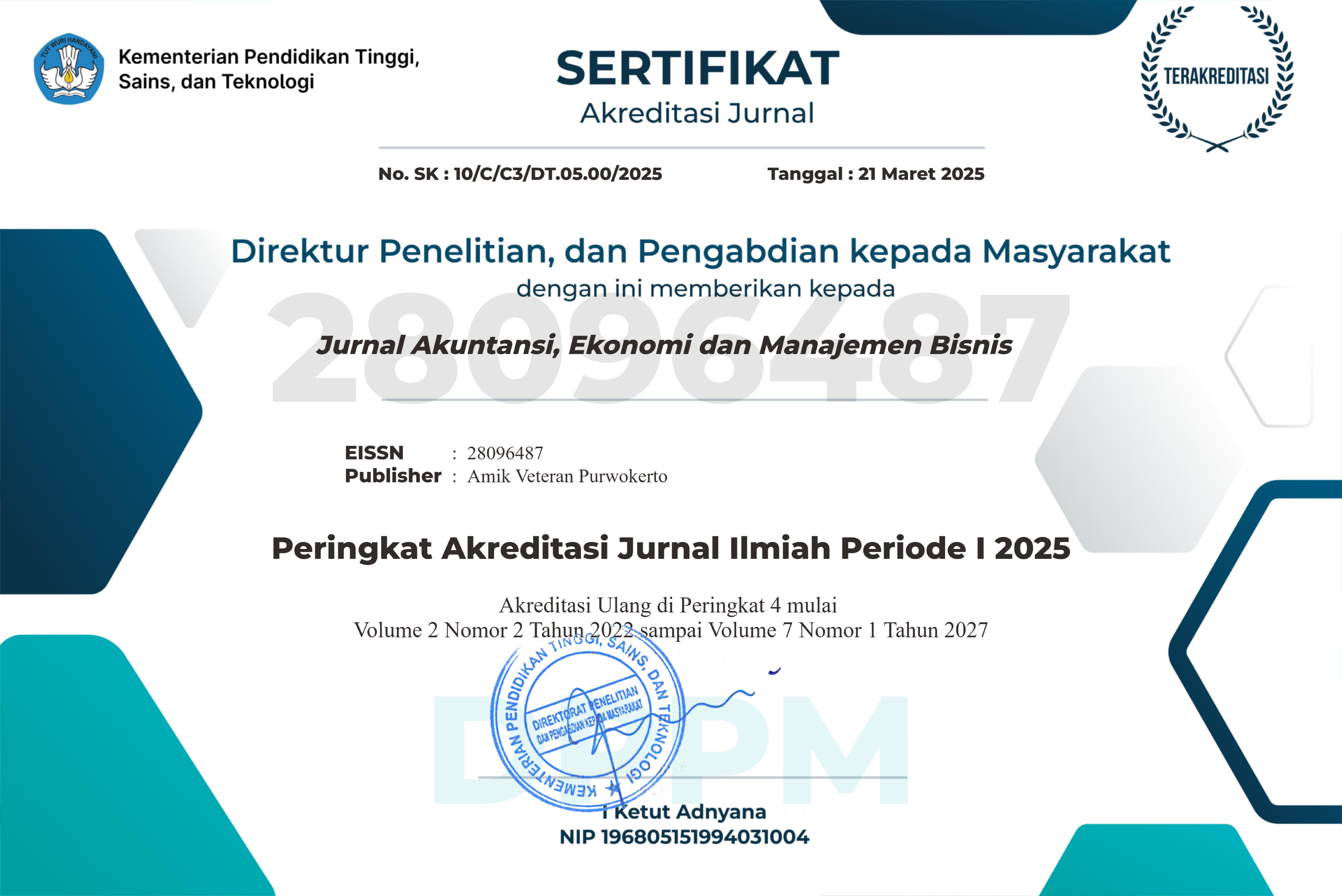Penerapan Strategi Kompensasi dan Motivasi pada Kinerja Karyawan di PT Alfaria Trijaya Tbk, Sampangan Kec. Gajah Mungkur Semarang
DOI:
https://doi.org/10.55606/jaemb.v5i3.7348Keywords:
compensation, motivation, employee performance, alfamart, retail sector, linear regression, human resource managementAbstract
This study examines the impact of compensation and motivation on employee performance at PT Alfaria Trijaya Tbk, Sampangan Branch, Semarang. Using a quantitative approach, data were collected from 29 employees through Likert-scale questionnaires and analyzed using multiple linear regression. Results show that both compensation (t = 8.56, p < 0.05) and motivation (t = 7.81, p < 0.05) significantly influence employee performance. The model explains 74.8% of performance variance (R² = 0.748), confirming equity and expectancy theories' relevance in retail contexts. These findings suggest that fair compensation systems and effective motivational strategies are critical for optimizing retail employee performance, providing practical insights for Alfamart management and contributing to HR management literature in Indonesia's retail industry.
References
[1] P. Güngör, “The Relationship between Reward Management System and Employee Performance with the Mediating Role of Motivation: A Quantitative Study on Global Banks,” Procedia - Soc. Behav. Sci., vol. 24, hal. 1510–1520, 2011, doi: 10.1016/j.sbspro.2011.09.029.
[2] M. Alshmemri, L. Shahwan-Akl, dan P. Maude, “Herzberg’s Two-Factor Theory,” Life Sci. J., vol. 14, hal. 12–16, 2017.
[3] D. Ramadan Wardiansyah, N. Khusniyah Indrawati, dan D. Tri Kurniawati, “The effect of employee motivation and employee engagement on job performance mediated by job satisfaction,” Int. J. Res. Bus. Soc. Sci. (2147- 4478), vol. 13, no. 1, hal. 220–231, Feb 2024, doi: 10.20525/ijrbs.v13i1.3133.
[4] PT Sumber Alfaria Trijaya Tbk, “Profil Perusahaan.” Diakses: 7 Januari 2025. [Daring]. Tersedia pada: https://alfamart.co.id/tentang-perusahaan/profil-kami
[5] L. Hutabarat, N. S. Sihombing, S. P. Herlambang, P. N. U. S. Siregar, dan J. Sitompul, “The Effect of Competence, Compensation, Workload, and Work Motivation toward Employee Performance,” Int. J. Financ. Econ. Bus., vol. 2, no. 1, hal. 84–92, Mei 2023, doi: 10.56225/ijfeb.v2i1.171.
[6] D. Al-Fraihat, M. Joy, R. Masa’deh, dan J. Sinclair, “Evaluating E-learning systems success: An empirical study,” Comput. Human Behav., vol. 102, hal. 67–86, Jan 2020, doi: 10.1016/j.chb.2019.08.004.
[7] C. Ogbonnaya, K. Daniels, dan K. Nielsen, “How Incentive Pay Affects Employee Engagement, Satisfaction, and Trust,” Harv. Bus. Rev., Mar 2017.
[8] A. H. Maslow, “A theory of human motivation.,” Psychol. Rev., vol. 50, no. 4, hal. 370–396, Jul 1943, doi: 10.1037/h0054346.
[9] O. A. Ihensekien dan A. C. Joel, “Abraham Maslow’s Hierarchy of Needs and Frederick Herzberg’s Two-Factor Motivation Theories: Implications for Organizational Performance,” Rom. Econ. J., no. 85, Jul 2023, doi: 10.24818/REJ/2023/85/04.
[10] M. Ishaq Bhatti, H. M. Awan, dan Z. Razaq, “The key performance indicators (KPIs) and their impact on overall organizational performance,” Qual. Quant., vol. 48, no. 6, hal. 3127–3143, Nov 2014, doi: 10.1007/s11135-013-9945-y.
[11] G. Dessler, Human Resource Management, 16th ed. Pearson, 2020.
[12] R. L. Mathis, J. Jackson, S. Valentine, dan P. Meglich, Human Resource Management, 15th ed. Cengage Learning, 2016.
[13] J. R. Schermerhorn, J. G. Hunt, R. N. Osborn, dan M. Uhl-Bien, Organizational Behavior, 13th ed. New York: John Wiley & Sons, 2018.
[14] J. S. Adams, “Inequity In Social Exchange,” in Advances in Experimental Social Psychology, 1965, hal. 267–299. doi: 10.1016/S0065-2601(08)60108-2.
[15] R. T. Mowday, “Equity Theory: Predictions of Behavior in Organizations,” in Motivation & Work Behavior, 4th ed., R. M. Steers dan L. W. Porter, Ed., New York: McGraw Hill, 1967, hal. 89–110.
[16] V. H. Vroom, Work and Motivation. New York: John Wiley & Sons, 1964.
[17] R. M. Ryan dan E. L. Deci, “Intrinsic and Extrinsic Motivations: Classic Definitions and New Directions,” Contemp. Educ. Psychol., vol. 25, no. 1, hal. 54–67, Jan 2000, doi: 10.1006/ceps.1999.1020.
[18] E. L. Deci dan R. M. Ryan, “The ‘What’ and ‘Why’ of Goal Pursuits: Human Needs and the Self-Determination of Behavior,” Psychol. Inq., vol. 11, no. 4, hal. 227–268, Okt 2000, doi: 10.1207/S15327965PLI1104_01.
[19] A. H. Maslow, Motivation and Personality, 3 ed. Delhi, India: Pearson Education, 1987.
[20] F. Herzberg, B. Mausner, dan B. B. Snyderman, The Motivation to Work, 12th ed. Transaction Publishers, 1959.
[21] F. Herzberg, “One more time: How do you motivate employees?,” Harv. Bus. Rev., vol. 46, hal. 53–62, 1968.
[22] A. A. A. P. Mangkunegara, Manajemen Sumber Daya Manusia Perusahaan. Bandung: PT Remaja Rosdakarya, 2017.
[23] H. J. Bernardin dan J. E. A. Russell, Human Resource Management: An Experiential Approach, 6th ed. New York: McGraw Hill, 2013.
[24] S. P. Robbins dan T. A. Judge, Organizational Behavior, 19th ed. Pearson, 2023.
[25] A. Parasuraman, V. A. Zeithaml, dan L. L. Berry, “A Conceptual Model of Service Quality and Its Implications for Future Research,” J. Mark., vol. 49, no. 4, hal. 41, 1985, doi: 10.2307/1251430.
[26] R. S. Kaplan dan D. P. Norton, “The balanced scorecard: Measures that drive performance,” Harv. Bus. Rev., vol. 70, 1992.
[27] K. L. Newman dan S. D. Nollen, “Culture and Congruence: The Fit Between Management Practices and National Culture,” J. Int. Bus. Stud., vol. 27, no. 4, hal. 753–779, Sep 1996, doi: 10.1057/palgrave.jibs.8490152.
[28] U. Sekaran dan R. Bougie, Research Methods for Business: A Skill-Building Approach, 7 ed. West Sussex: Wiley & Sons, 2016.
[29] J. F. Hair, B. J. Babin, R. E. Anderson, dan W. C. Black, Multivariate Data Analysis, 8th ed. Pearson Prentice, 2019.
[30] R. M. Steers, R. T. Mowday, dan D. L. Shapiro, “The Future of Work Motivation Theory,” Acad. Manag. Rev., vol. 29, no. 3, hal. 379, Jul 2004, doi: 10.2307/20159049.
Downloads
Published
How to Cite
Issue
Section
License
Copyright (c) 2025 Jurnal Akuntansi, Ekonomi dan Manajemen Bisnis

This work is licensed under a Creative Commons Attribution-ShareAlike 4.0 International License.








